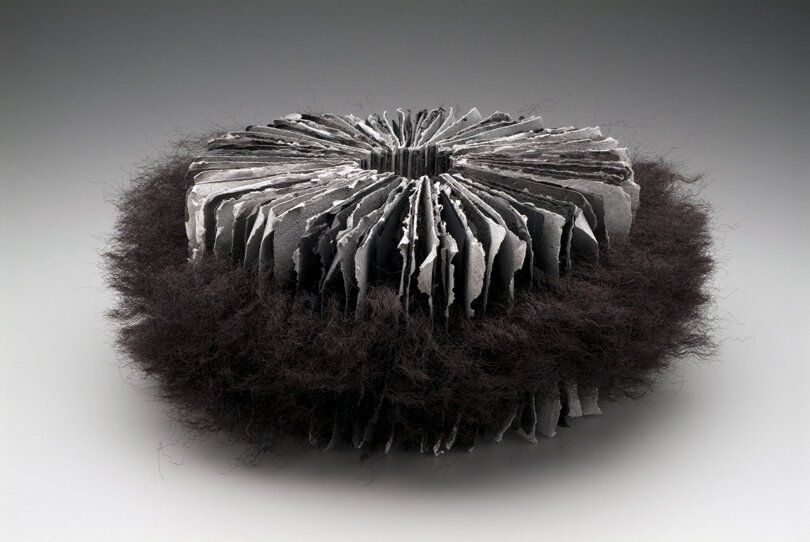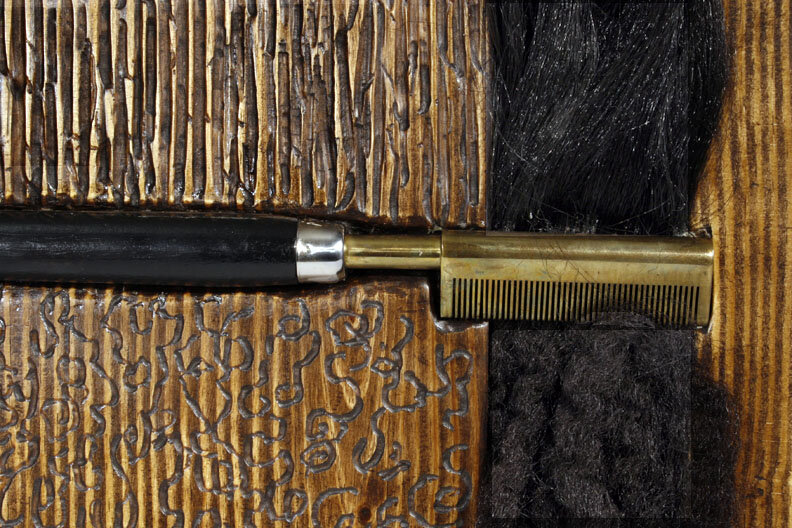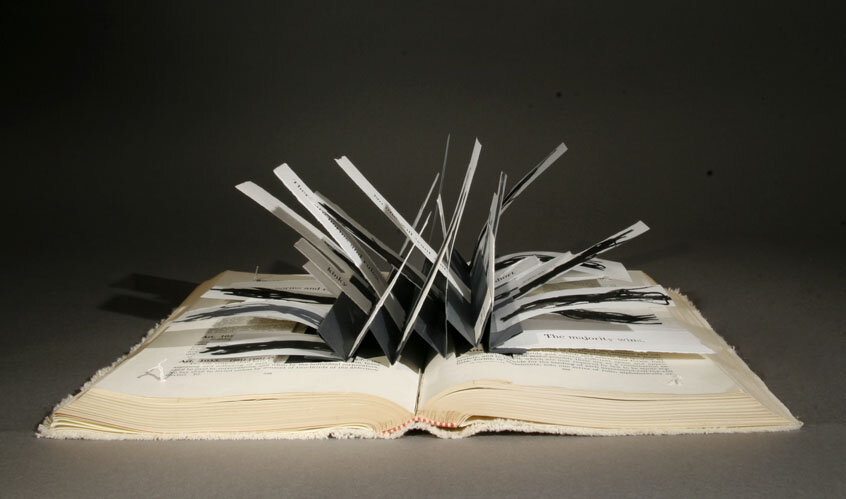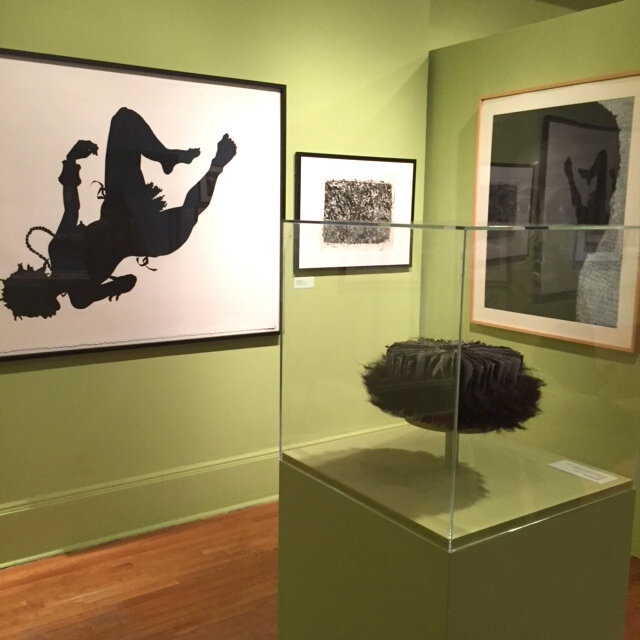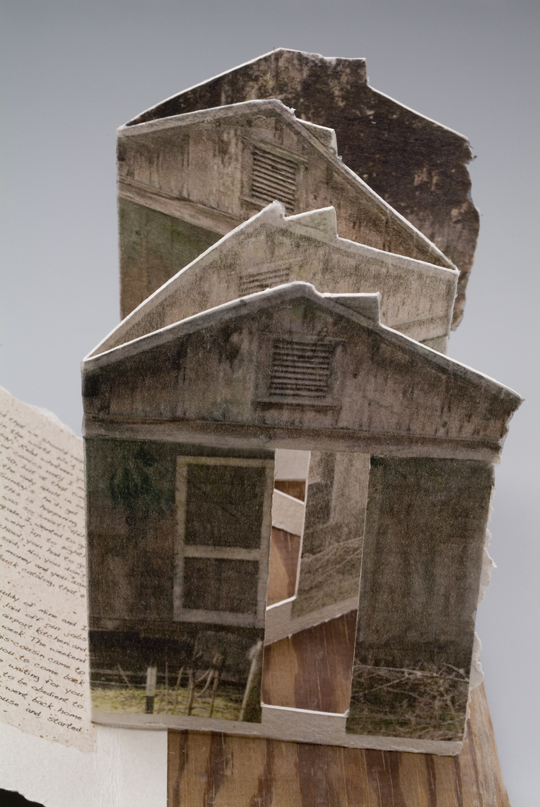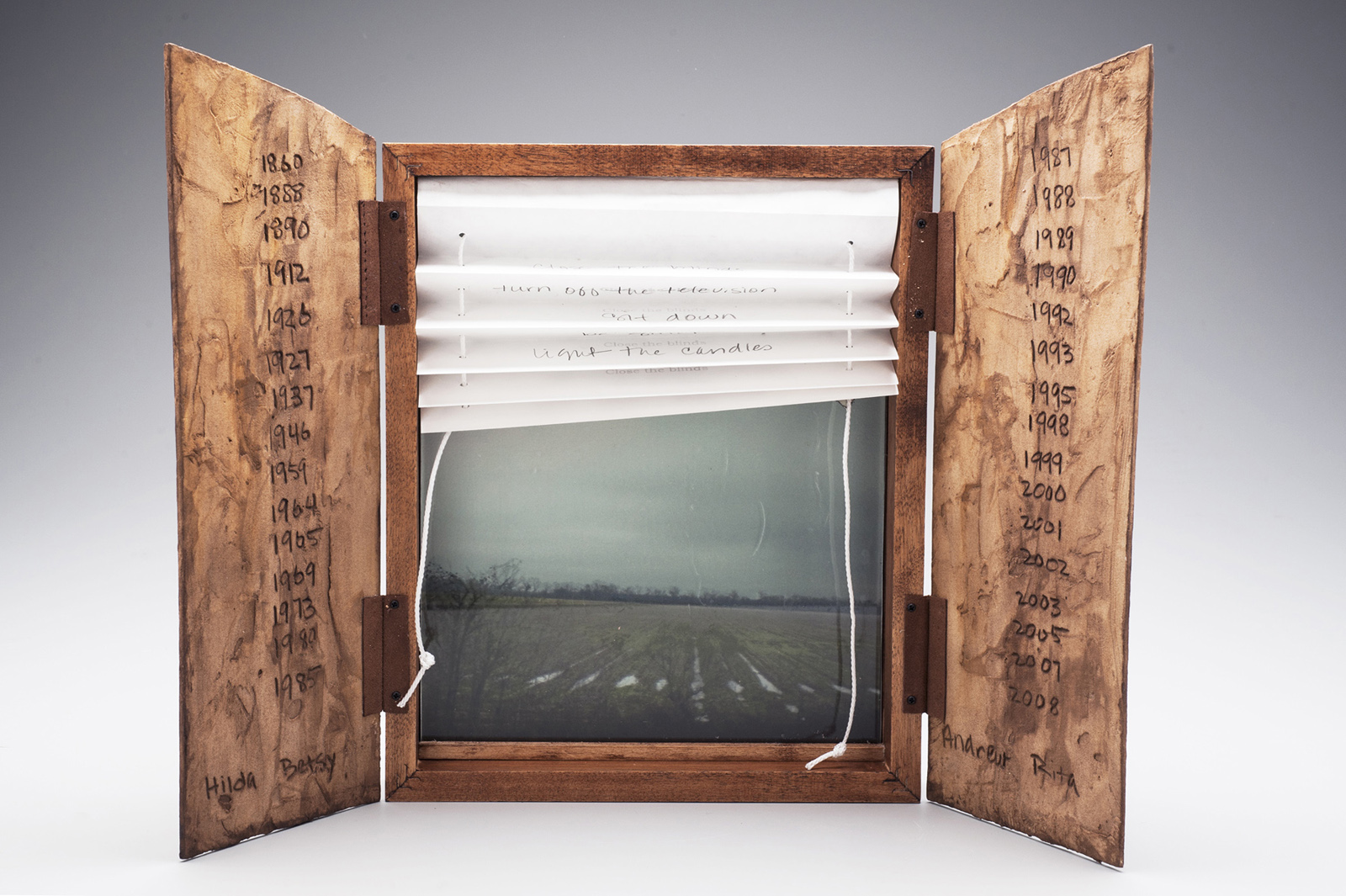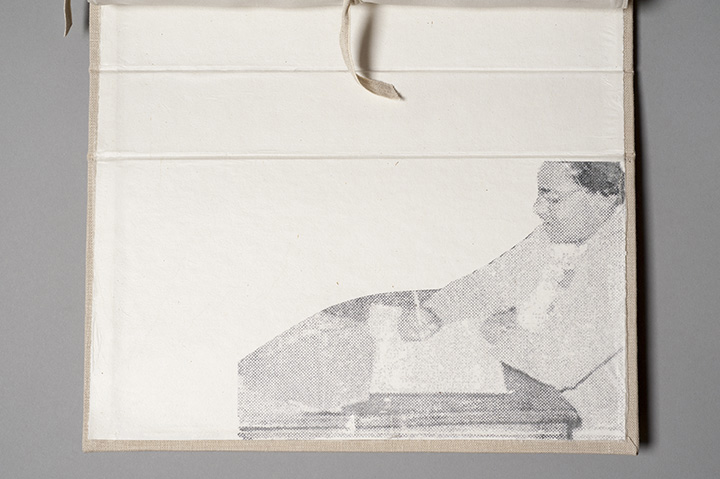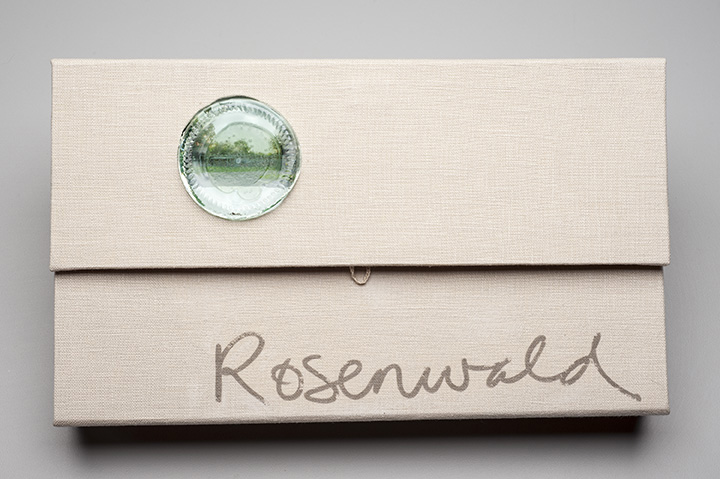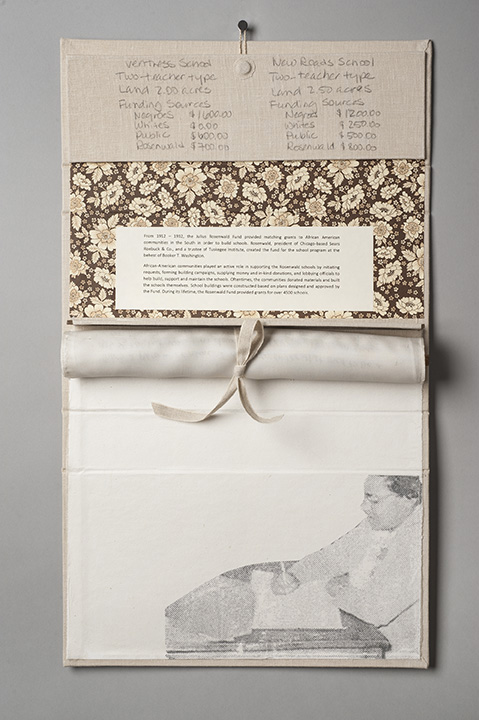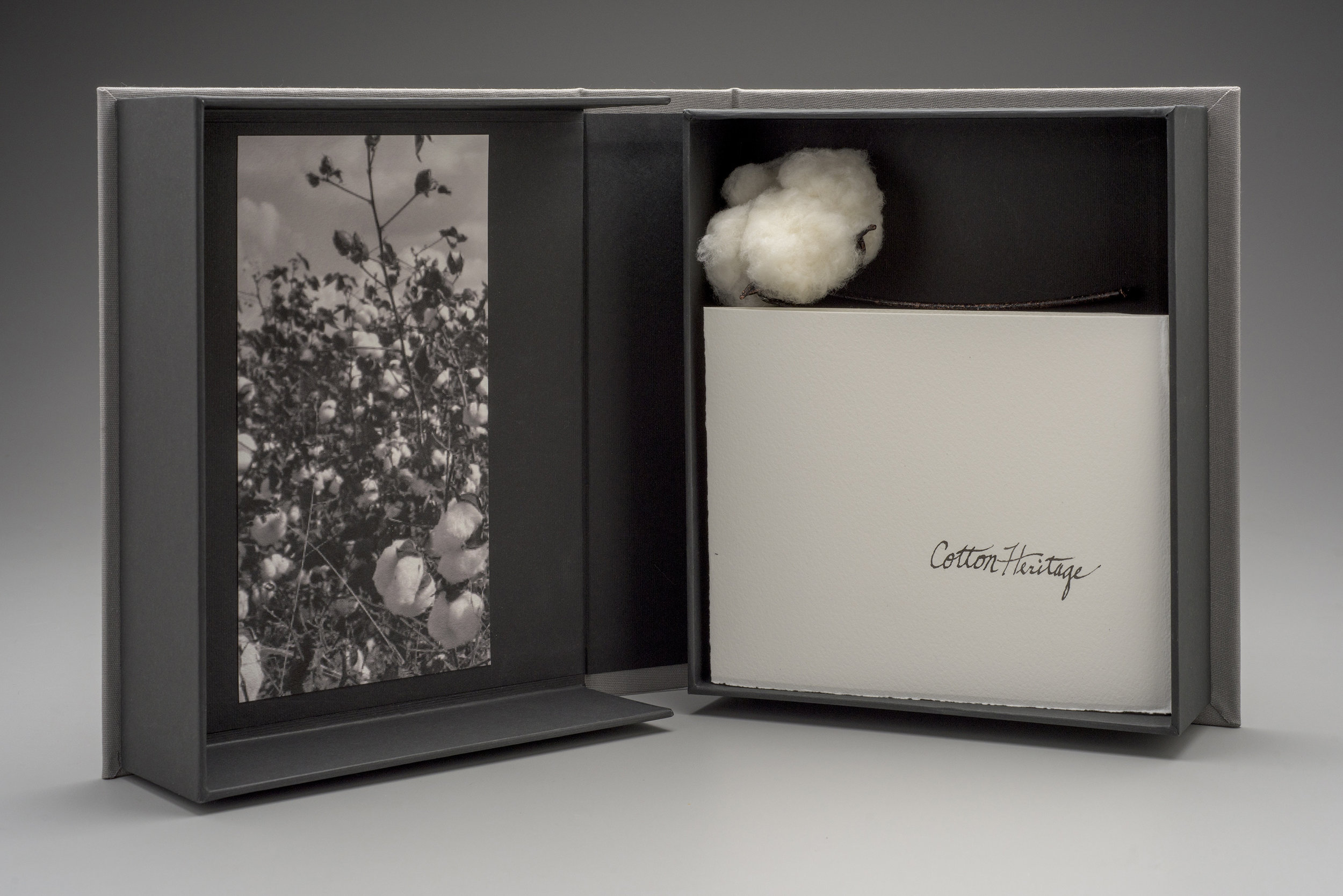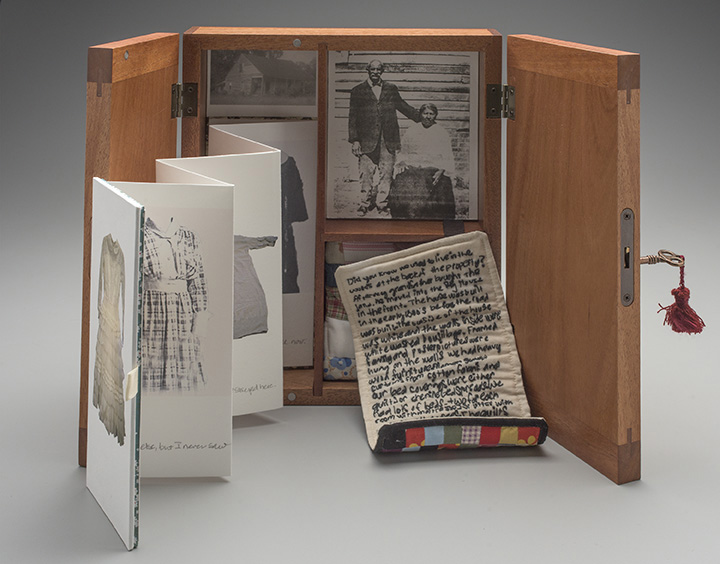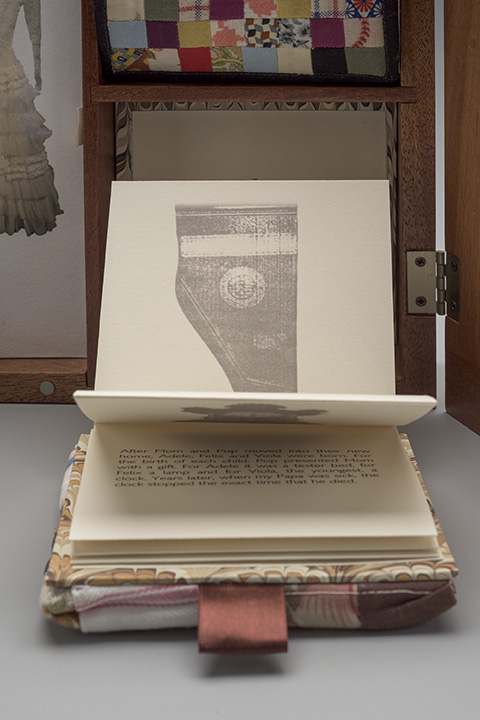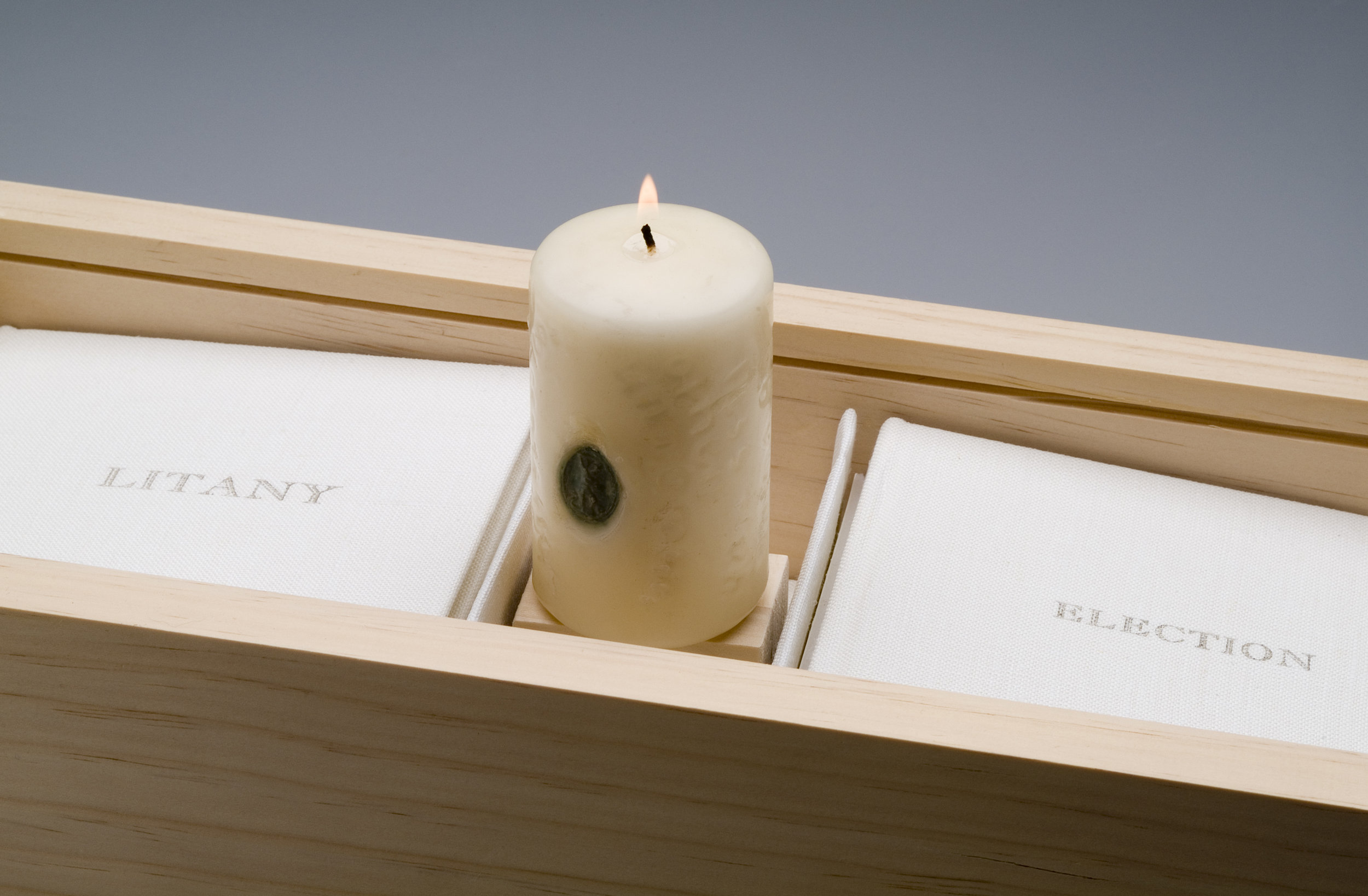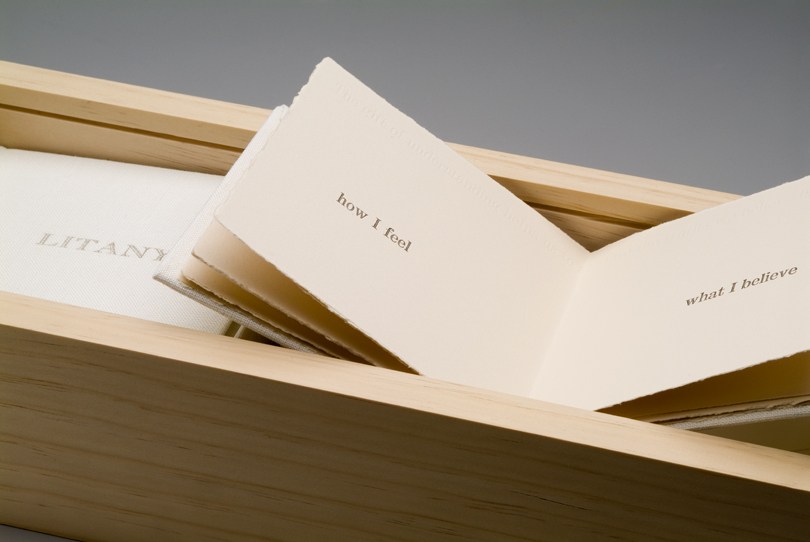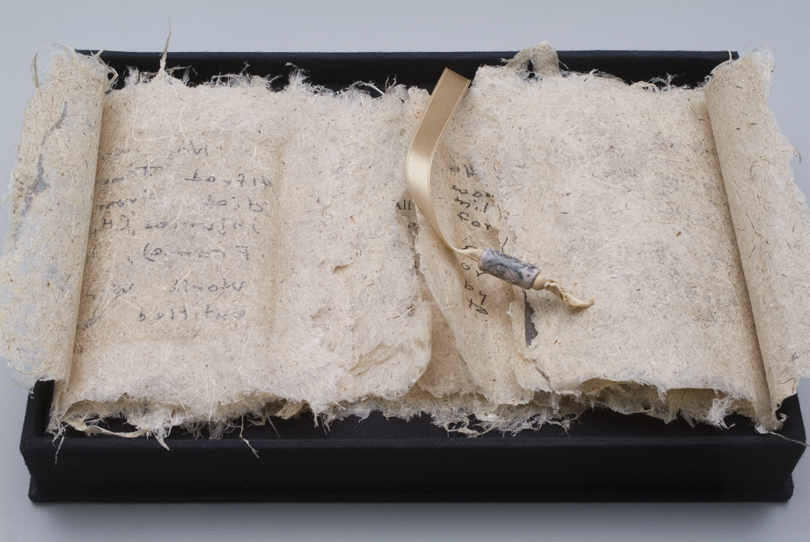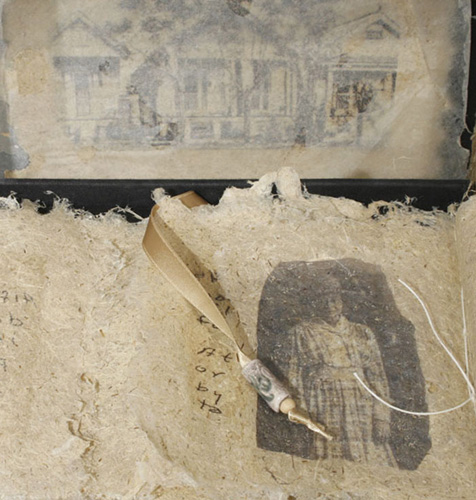
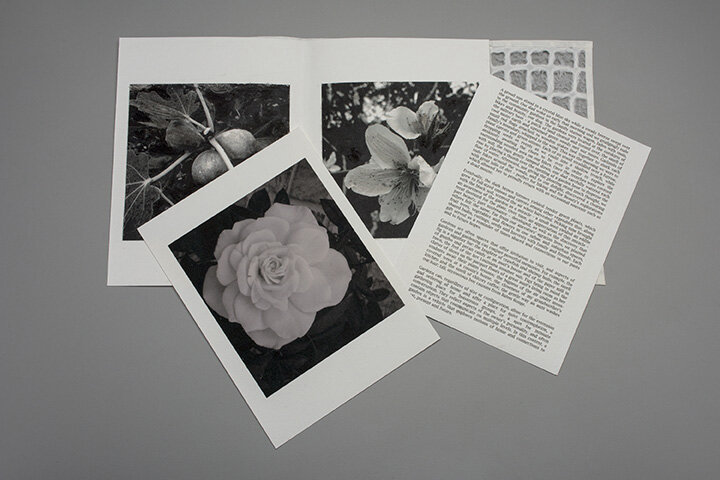
Planted is housed in the Special Collections and Archives Library at Reed College, located in Portland, OR.
The library holdings include rare books, manuscripts, calligraphy and letter forms, and an artist book collection as well as others. More information is located on the Special Collections page where one can learn more about the origin and focus of the various collections. The Artist Book Collection has a searchable database. It appears that all works are not accessible via the digital library, but one is able to access holdings using the main search function. The collections are open to the public. The Visit Us page outlines instructions for visitors wishing to access work.
Planted consists of one deluxe and a standard edition of four. The edition featured above, which is in the Reed collection is a standard edition. It features an essay on gardening and how gardens have the potential to connect to ancestors.
